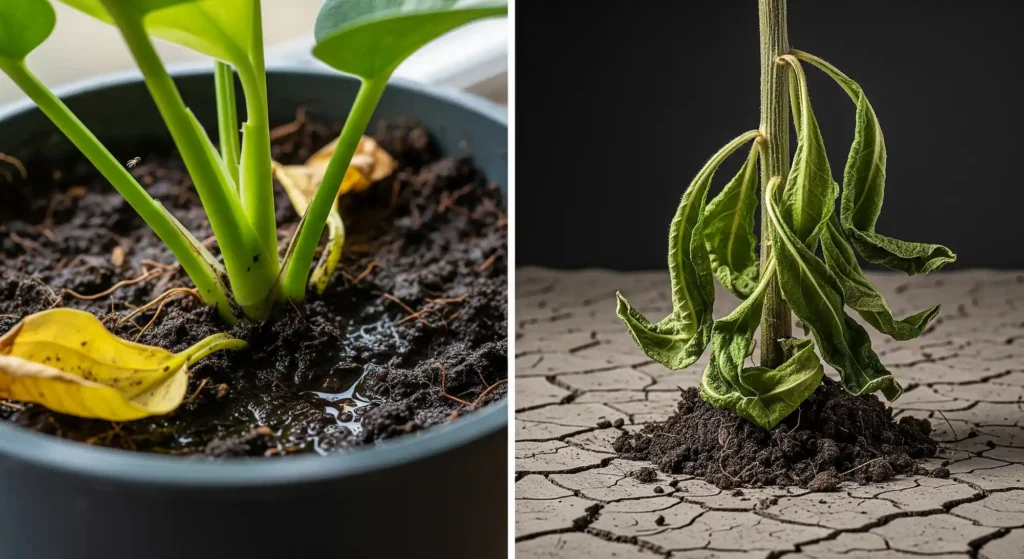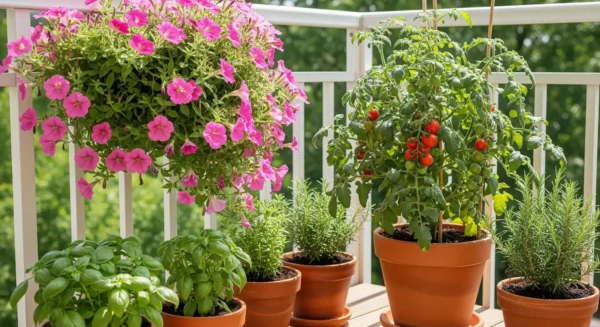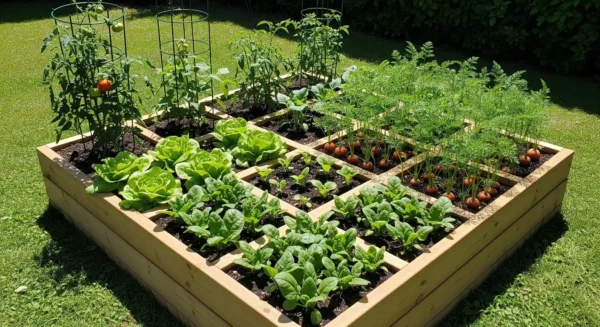Is the Garden on Your Balcony Dying? You Most Likely Made One of These Five Common (and Correctable) Errors.
You accomplished exactly what was needed. You bought the lovely pot, the elegant bag of soil, the ideal small plant from the nursery. You gave it a water bath. You found it to be great. And now it’s yellow, limp, and seems to be quite truly unhappy. Every gardener, including this one, is too well familiar with this sinking sensation. I want you to lean in and hear this before you give up: your plant is merely trying to inform you; it is not attempting to annoy you.
I want you to know this before you label yourself as a “plant killer” and dump another sad-looking plant in the compost: virtually often, overcoming the most frequent container gardening problems boils down to understanding and fixing one of five basic things. Usually involving water, sun, soil, space, or food, it is not magic; it is simply a checklist.
The positive news is? The repairs are very simple once you know to identify the symptoms. This book will equip you to become a plant detective rather than only highlight errors. We will walk through each of the five primary challenges, show you exactly what your plant is trying to tell you, and provide you the basic, step-by-step fixes to pull your green buddies back from the brink. Prepared to at last grasp what your plants have been trying to say? Let’s begin.
Deciphering Stress: A Handbook for Overcoming Typical Container Gardening Problems
Here we put on our detective caps. We will follow the hints your plant is pointing to back to the source.
The Watering Problems—Too Much or Too Little
For beginning container gardeners, this is without a doubt the number one problem. What then? Because a garden bed is not at all like the atmosphere pots offer. These self-contained ecosystems dry out far faster than others, hence either we ignore them completely or panic-water them continually.
- Overwatering symptoms: Yellowing leaves, particularly around the bottom of the plant. The plant may appear withered even in moist soil because the smothering roots cannot efficiently absorb water. Small, annoying fungus gnats that appreciate always damp conditions could also be fluttering around the soil.
- Underwatering symptoms: The plant will seem depressed and drooping, yet it will come alive quite drastically after a nice drink. The margins of the leaves could seem burnt and crispy, and you might find the dirt dragging away from the pot’s sides.

The Simple Fix: Learn The Finger Test
and throw away the strict watering calendar. There is no more dependable way than this one.
- About two inches down in the potting soil, stick your index finger.
- Time to water if the soil feels dry at your fingertip.
- Should it seem damp, wait another day and double-check.
- Pour evenly as you do water until the drainage holes at the bottom stream freely. This guarantees whole root ball saturation.
The Sunlight Mismatch (Location, Location, Location)
Especially on a balcony or patio where heat can reflect off of walls and pavement, we sometimes undervalue the power of the sun. That area you considered to be “part sun” can be a six-hour bake-a-thon for a delicate plant.
- Too much sun will show up as white or brown scorched-looking spots on the foliage. Even if the soil is moist, the leaves may seem faded or bleached out and the plant may wither drastically during the hottest part of the day.
- Gardeners refer to “leggy” growth as evidence of too little sun. Desperate for a light source, the plant will look stretched out with long, spindly stems and few leaves. It will probably look pale green rather than rich and vivid and fail to generate blossoms.

The easy fix is to monitor and honor the plant tag.
- Actually read the labels to find out whether a plant requires “Full Sun” (6+ hours of direct sun), “Part Sun/Shade” (3-6 hours, especially soft morning sun), or “Shade” (less than 3 hours of direct sun) before you buy it.
- Spend a day looking about your place. At nine in morning, where does the sun land? at noon? Around 4 PM? One superpowers is knowing your “microclimates”.
- Don’t hesitate to rearrange your pots. Container gardening has the beauty in that your garden is not fixed in location. Discover the happy place for every plant.
Soil Suffocation (Based on the incorrect foundation)
This is a mistake out by basic pragmatic need. Scoop some dirt from your lawn and fill a container sounds so simple. Please, I implore you, never do this! Rich in clay, garden soil compacts like a brick inside a pot, therefore suffocating the roots of your plant.
- Signs of Bad Soil: You will see the water pool on the surface for a long period of time before the water slowly drains when watering. When dried the earth will feel either like a viscous, muddy soup or rock-hard and cracked. The development of your plant is probably limited.
The simplest rule to follow is this one: The Simple Fix
Always use a product marked especially as “Container Mix” or “potting mix.” This is very non-negotiable. Potting mixtures are made to be light and fluffy scientifically. Their components—peat moss, coir, perlite, and compost—which strike the ideal mix—hold onto moisture but also include air gaps allowing roots to breathe and thrive. If you grow cactus or succulents, go one step further and acquire a specific “Cactus Mix,” which contains more sand or perlite for the super-fast drainage those plants want.
The Crowded House (Invalid Pot Size)
Your plant, like Goldilocks, needs one that is just perfect; it does not want a pot either too big or too small. Often we place a small plant in a large container believing it would be happier with “room to grow,” but this typically backfires. Conversely, a plant left in a too tiny pot will grow less.
- Signs the Pot is Too Small: You will literally find roots emerging from the drainage holes. Lack of soil to retain moisture causes the plant to wither very rapidly—even only one day after watering. It might also turn top-heavy and topple readily.
- Signs the Pot is Too Big: This one is more subdued. There is a great chance of root rot since the ground will seem to stay moist indefinitely. The plant may not flourish much on top since it is expanding all of its energy to cover that large swath of ground with roots.
The “Two-inch Rule” is the simple fix.
- Choose a new pot just one to two inches larger in diameter than the old one when you are shifting a plant to a larger one. This offers just enough fresh room without overloading the plant.
- And let me mention it once more for the folks seated far back: your pot really MUST have drainage holes. A decorative cachepot is a pot lacking holes. Either drill holes in it or arrange a smaller plastic pot with holes within it.
The Hunger Games, or Nutrient Neglect
From worms, decomposing trash, and the huge soil ecology, a plant in the earth has access to a complete universe of nutrients. A plant in a pot has access to just what that container holds. Every time you water, you’re not just watering the plant; you’re also flushing a tiny bit of nutrients out via the drainage hole.
- Usually beginning with the older, lower leaves, a general, uniform yellowing of the foliage indicates a nutrient deficiency. The plant will generate few, if any, flowers or fruit; growth may be feeble and spindly.
The easy fix is to develop the habit of feeding your plants.
- You should begin a consistent feeding schedule about one month following plant potting.
- For novices, a simple choice is a balanced, all-purpose liquid fertilizer. When you plant, toss a slow-release granular fertilizer into your potting mix for an even more basic approach. It will feed your plants little bits over several months.
- Though a solid rule of thumb is to feed your plants with a diluted solution every 2 to 4 weeks, just during their busy growing season in the spring and summer, read the guidelines on the package.
Eventually, from Plant Detective to Confident Gardener
Look at it. After all, it wasn’t all that terrifying. Garden success is not about having some sort of miraculous “green thumb.” It’s about being perceptive, learning to spot trends, and realizing that a yellow leaf is only a hint from your plant asking for a little assistance—not a reflection of your failure.
Learning to identify and address these five common container gardening problems will equip you with the fundamental knowledge for a lifetime of delighted, healthy plants. You have formally moved from a nervous plant owner to a confident plant friend.
Go on, then have another look at the plant you were concerned about. Is it in need of drink? Is it orienting toward the sun? Is it a little cramped? You know what you need right now. Trust your intuition, make one little, deliberate modification, and get ready to see your garden grow. You are right.
Frequently asked questions
Every leaf I have is dropping! First thing I should look at?
Stick your finger in the ground before you start to freak. Often a plant’s dramatic response to a hydration problem is sudden leaf drop. It could be from root rot brought on by too much overwatering or from severe underwatering, in which the plant is losing leaves to retain moisture. The tale that the soil moisture tells will be the accurate one.
For better drainage at the bottom of my pot, may I put gravel or rocks?
One of the most recurring gardening fallacies available is this one! The reality is that adding rocks to the bottom has little effect on drainage. Actually, it builds a layer of still water just above the pebbles that could drown the roots of your plant. Just using a premium potting mix and making sure your pot has many of drainage holes would help significantly more.
Should I fertilize my plants over winter?
Generally, no. Consider winter as your plant’s time off. Most plants either lay dormant or slow their development considerably down, so they don’t require the extra nutrients given fewer days and less light. You can cease fertilizing in the early fall and schedule to resume in the spring when fresh development first appears.
Is “harden off” truly required and what does it mean?
“Hardening off” is the process of progressively bringing a plant used indoors to the outdoors. Starting seeds within your house means that they are in a somewhat mild surroundings. They would enter shock if you moved them straight outside into the strong sun and wind. Moving them outside for just one hour the first day, two hours the second, and so on for around a week helps them to harden off. Their life depends on this critically vital stage.









